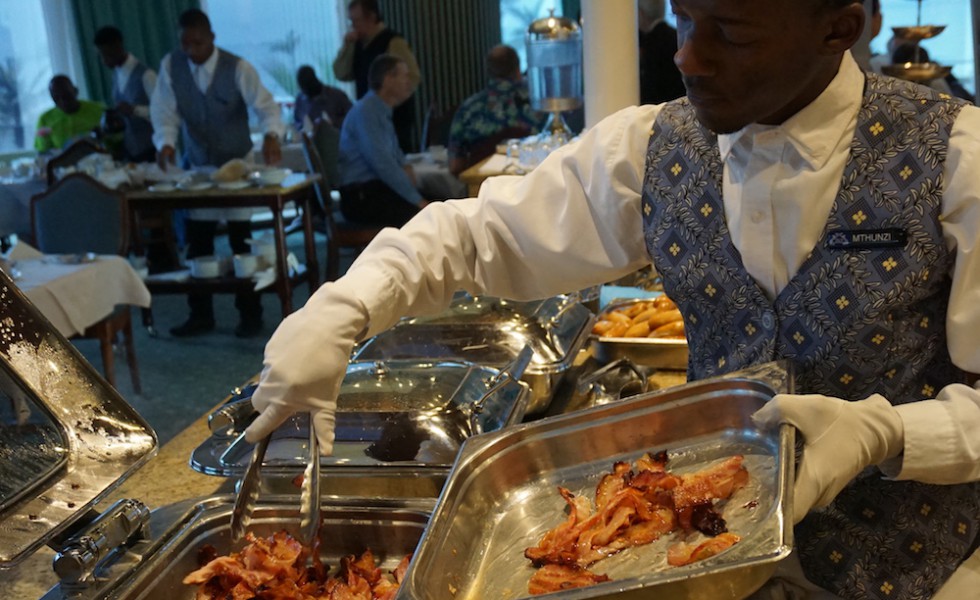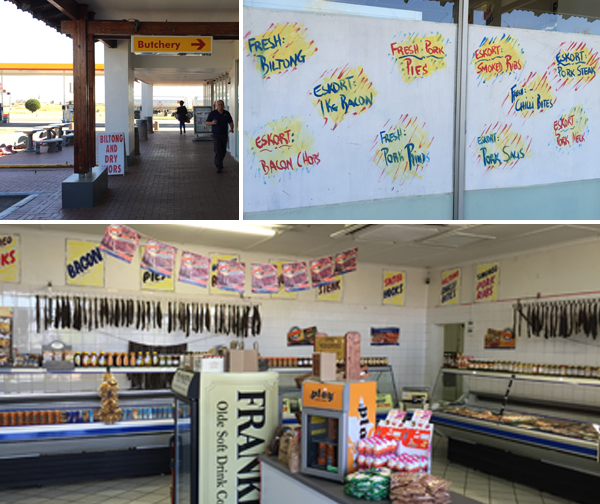
Biltong and Drought in KwaZulu-Natal (Part III)

Caroline Wimberly traveled to Durban, South Africa in late August 2015 to attend three conferences on behalf of Brighter Green. Afterwards, she traveled extensively around the country. This blog is the third in a four-part series on her experiences and observations during the trip.
South Africa is a beautiful country. I was astounded at its topographic diversity, prevalence of various wild animals, and multiple languages (it has 11 official ones, with tribal languages Zulu and Xhosa being the most widely spoken).
Another noticeable feature of South African culture is the prevalence of meat. From Zulus to Afrikaaners to tourists, meat plays a big role in the diets of many South African communities. Even though the country’s per capita meat consumption is about 65 kilograms (143 pounds)—just slightly over half of U.S. consumption levels— meat is pretty much everywhere.
The South African version of beef jerky, called biltong, is a popular meat product. It’s usually made with beef, but can be ostrich meat or even other “game (wildlife). Here is a store selling biltong and other meats at a gas station in a rural area west of Durban:
I was shocked to come across a butchery inside a gas station! I asked a man who worked in the store if this was a common juxtaposition in South Africa, and he said it wasn’t; it’s just that there’s “lots of livestock in the area”. I found this fascinating and dismaying at the same time.
I had been told multiple times that much of the state of KwaZulu-Natal (along the eastern coast of the country) was experiencing a devastating drought, possibly the worst in 23 years. As Brighter Green has written about many times (here and here), animal products require lots of water (in addition to land and energy), much more than plant-based products and overall emit way more greenhouse gases. It appeared that no one was really connecting the dots between animal agriculture and global warming, including drought (not to mention deforestation, small farmer livelihoods, and public health).
One hotel I stayed at in Durban had multiple meat offerings at every meal, including the breakfast buffet, which seemed excessive, even by U.S. standards:
I asked the chef in charge of ordering food for the hotel about his food sourcing. I didn’t hear any of the buzz words like “local”, “sustainable”, “free-range”, “organic”, or “welfare”. He was very nice and even brought out his purveyor binder that had probably almost 100 business cards inside, but didn’t express any interest in how the food coming to his restaurant was grown/raised.
Admittedly, connecting meat production with various environmental problems is just recently becoming a mainstream issue (and one Brighter Green has covered from the beginning of our work), but there are a number of individuals and organizations shedding light on these connections, and will continue to do so, to help create a more just, climate-friendly food system.
 Brighter Green
Brighter Green





